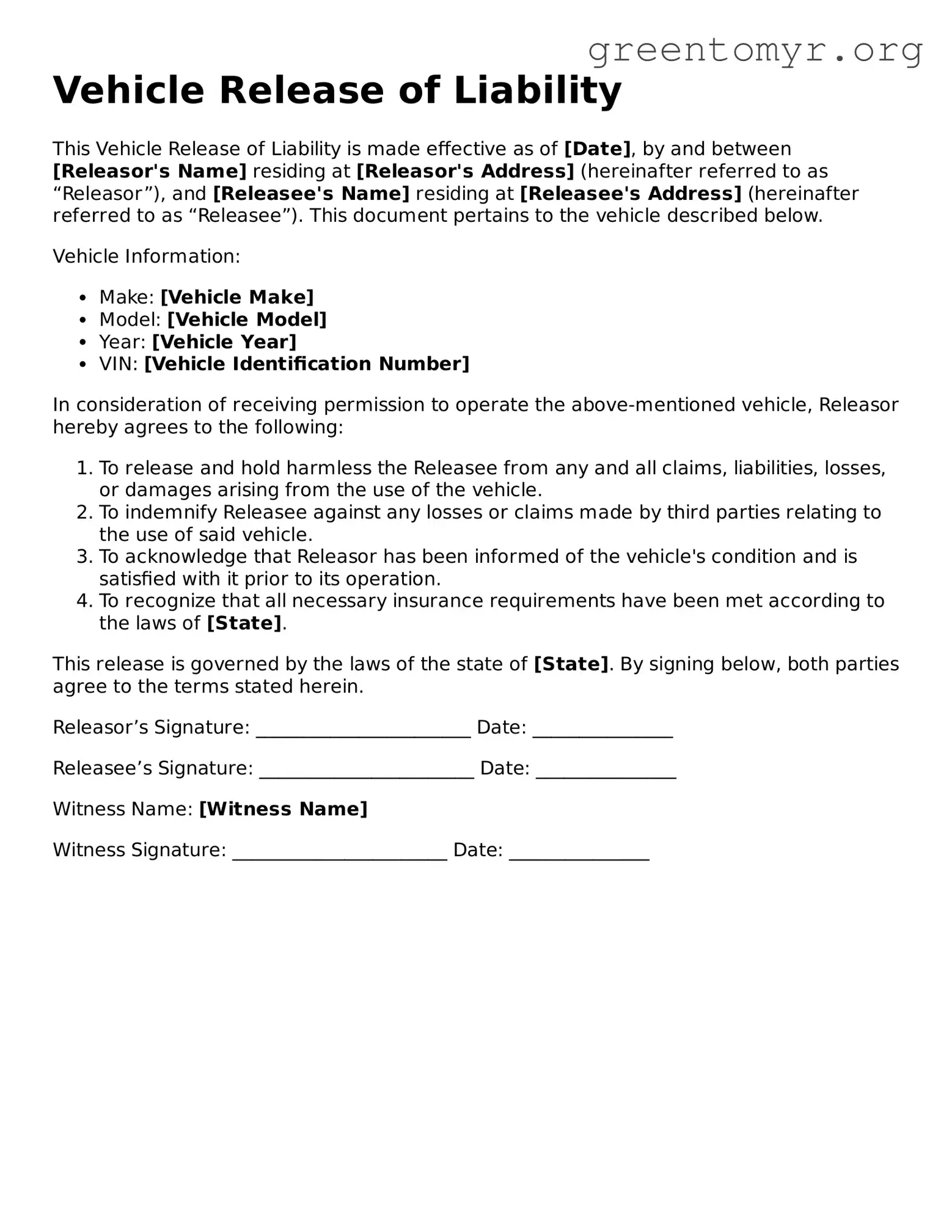Vehicle Release of Liability
This Vehicle Release of Liability is made effective as of [Date], by and between [Releasor's Name] residing at [Releasor's Address] (hereinafter referred to as “Releasor”), and [Releasee's Name] residing at [Releasee's Address] (hereinafter referred to as “Releasee”). This document pertains to the vehicle described below.
Vehicle Information:
- Make: [Vehicle Make]
- Model: [Vehicle Model]
- Year: [Vehicle Year]
- VIN: [Vehicle Identification Number]
In consideration of receiving permission to operate the above-mentioned vehicle, Releasor hereby agrees to the following:
- To release and hold harmless the Releasee from any and all claims, liabilities, losses, or damages arising from the use of the vehicle.
- To indemnify Releasee against any losses or claims made by third parties relating to the use of said vehicle.
- To acknowledge that Releasor has been informed of the vehicle's condition and is satisfied with it prior to its operation.
- To recognize that all necessary insurance requirements have been met according to the laws of [State].
This release is governed by the laws of the state of [State]. By signing below, both parties agree to the terms stated herein.
Releasor’s Signature: _______________________ Date: _______________
Releasee’s Signature: _______________________ Date: _______________
Witness Name: [Witness Name]
Witness Signature: _______________________ Date: _______________
